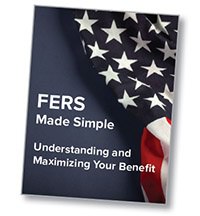Comparing TSP Investment Options for Federal Employees
January 11th, 2023 | 5 min. read

As a federal employee, your FERS basic benefit will likely be a major source of income in retirement. But it also likely won’t cover all your needs. That’s where the Thrift Savings Plan comes in. Like a private company 401(k) plan, the TSP allows you to save a portion of your paycheck in a tax-deferred investment account.
Whether early in your career or nearing retirement, you may be wondering: what TSP investment options are the best?
From doctors to law enforcement offices to postal workers, we have helped many federal employees navigate their TSP investment options. We can tell you that “best” is subjective.
It could mean the investments that offer the highest expected return. Or those that have the least amount of risk. Or even those that are most convenient to manage.
One investment isn’t necessarily better than another; it depends on what is right for you.
And, what TSP investment options are right for you depends on personal factors, such as your financial goals, age and assets.
But we’re going to help answer the question with this comparison of TSP investment options. Below, we break down each type of TSP fund options along with their pros and cons. Hopefully, you’ll come away with a better understanding of how to invest your TSP savings.
|
This Article Covers: Standard TSP Investment Funds TSP Lifecycle Funds The TSP Mutual Fund Window TSP Investment Tips A Professional Review of Your TSP Account |
Standard TSP Investment Funds
The TSP has five basic investment options, ranging from very conservative to very aggressive. You don’t have to choose just one. You can invest in several funds to help spread your risk among different investment options and achieve a greater degree of diversification.
G Fund
What’s in it: Government bonds.
What it offers: A guaranteed return in exchange for a low amount of risk. Also provides some income.
F Fund
What’s in it: Government, corporate and mortgage-backed bonds.
What it offers: A diversified bond portfolio that will offer a higher return than the G Fund, but also higher risk. Also provides income.
C Fund
What’s in it: Large and medium-sized U.S. company stocks.
What it offers: Higher potential return than the G & F Funds, but also higher risk. Offers little income but provides better potential to grow your money.
S Fund
What’s in it: Small- and medium-sized U.S. company stocks.
What it offers: A diversified alternative to the C Fund but with higher risk. Offers little income but provides better potential to grow your money.
I Fund
What’s in it: Foreign company stocks.
What it offers: A diversified alternative to the C & S Funds but with higher risk. Offers little income but provides better potential to grow your money.
As you can see, the funds either include different kinds of stocks or bonds. Stocks generally have higher risk for loss, but higher potential for growth. Conversely, bonds generally have lower risk, but also lower potential for growth. However, bonds typically provide a consistent payment of income in the form of interest.
To get a better sense of each fund’s level of risk, here is how they rank from least risk to most risk:

The Good and Bad of Standard TSP Investment Funds
Many federal employees find the standard TSP investment funds suitable for their retirement goals. They offer access to a diversified range of investments, and they are low cost.
The potential challenge is in moving money appropriately among funds as your needs change. That is, readjusting your asset allocation. For example, taking money from aggressive funds and investing in more conservative funds as you near retirement.
Choosing the right mix of stocks and bonds in your TSP account can be a complex investment decision. For help, you may want to consult a qualified financial adviser.
TSP Lifecycle Funds
Lifecycle Funds, or L Funds, offer a combination of the five investment options listed above. They are more aggressive when the employee starts and then gradually become more conservative as the employee approaches retirement. These types of funds are commonly known as “target date funds” because they are managed with a particular target retirement date in mind.
There are various L Funds available, each with a different year attached to them, of which you can choose the year closest to your ideal retirement date. Once the L Fund reaches its target date, it rolls into the L Income Fund. The L Income Fund is a very conservative fund meant to pay income during retirement.
The Good and Bad of TSP Lifecycle Funds
Ultimately, Lifecycle Funds can be convenient as they provide employees automatic management of their TSP portfolio, especially for those just starting their careers. If you doubt your ability to make investment decisions, these funds can take the stress out of managing your TSP account.
However, they have some serious drawbacks you should consider. For one, an L Fund may be too risky or not risky enough as it relates to your age, actual retirement date and financial goals. Also, L Funds adjust automatically without regard to market opportunities. So, if stocks pose a potentially good buying opportunity, the fund will not adjust to purchase more stocks, or vice versa.
TSP Mutual Fund Window
The mutual fund window allows some TSP participants to transfer money from their TSP account to a separate account. In this account, you can buy and sell a wider variety of mutual funds beyond the standard TSP funds (G, F, C, S, I and L).
There are certain restrictions and costs. It is available only to participants who have at least $40,000 saved in their TSP accounts. Further, the initial investment amount must be at least $10,000 but not more than 25% of your total TSP savings.
To invest in the mutual fund window, participants must pay a $55 annual fee, a $95 maintenance fee, $28.75 per trade, and any fees or expenses associated with the specific funds you choose.
The Good and Bad of the TSP Mutual Fund Window
Greater investment flexibility is a benefit to participants who want more control over their investment strategy. You may get to invest in certain parts of the market that you wouldn’t be able to in your TSP account – all of which can provide additional diversification benefits.
However, this option may make sense only for more knowledgeable TSP investors. Trading mutual funds with your TSP savings could lead to making risky or overly emotional investment decisions.
Most importantly, investing through the mutual fund window means paying investment fees you wouldn’t have to pay with standard TSP funds. This could reduce your overall investment growth. The less you pay in fees, the more of your return you get to keep.
Considering the complexity and costs involved, you may want to work with a financial adviser to determine if this is a good option, and if so, what funds are right for you.
Tips for Choosing TSP Investments
Start aggressive early in your career and then reduce risk closer to retirement.
Generally, the majority of your money, if not all of it, should be allocated to stocks (the C, S & I Funds) early in your career. As you approach retirement, you should start to reduce risk and move money to more conservative investments (F or G Fund) to protect your savings. How much you allocate to each fund and when you start to transition to more conservative investments is a matter of your personal situation.
Avoid investing too conservatively…
Even as you’re nearing retirement, it’s important to maintain some level of risk for growth potential. The goal is to choose a mix of funds with a level of risk you’re comfortable with and then keep it until your retirement date dictates more conservative investments.
…but avoid investing too aggressively.
Some investors make the mistake of investing in funds that have the highest historical returns while ignoring the high risk associated with these funds. (Stocks, historically, have performed better than bonds, but with higher risk.) They typically have very high concentrations in the C, S and I Funds. This strategy is generally appropriate for younger investors who have many years to recover from losses, or those who have a high risk tolerance.
Consider a Professional Review of Your TSP Account
In summary, how you should invest your TSP greatly depends on your personal situation, including your financial goals, income and age. We know that doesn’t give you a definitive answer.
For a definitive answer, you may want to consider a review of your TSP account by a FERS-experienced financial adviser who can help determine what investments are most appropriate for you.
If you do not have one, feel free to speak with a financial adviser at Advance Capital Management.
It’s important to remember, what TSP investment options are right for you will change over time. So, it helps to have continued guidance along the way.
Learn more about government retirement benefits, including the FERS basic benefit, the Thrift Savings Plan and other retirement planning steps, by downloading our free, easy-to-understand guidebook, FERS Made Simple: Understanding and Maximizing Your Benefit.
As a financial adviser, Kurt takes a comprehensive approach to help clients work toward their financial goals by providing wealth management tools including retirement planning, investment portfolio advice and tax strategies. He specializes in federal government benefits and is a Chartered Retirement Planning Counselor.


